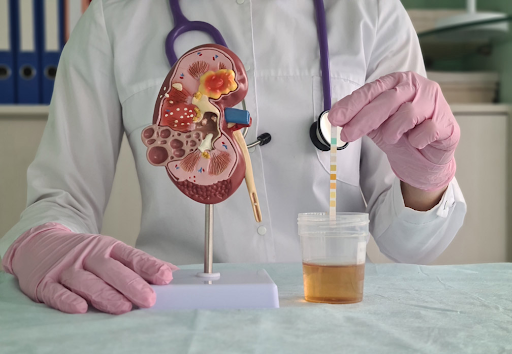A kidney whispers long before it ever shouts, if you know how to listen. Scrutinising the subtle signals your kidneys send can reveal rich truths about safety, disease, and the silent choreography between medicines and your body’s filters. When you look closely at kidney toxicity models, you will find a realm where cellular drama unfolds by the minute, researchers balance on the divide between harm and healing, and predictions are measured in micrograms. Step beyond the bland, here, you will peer into a field blending biology, technology, and a dash of detective work to protect lives and sharpen science.
Importance of Kidney Toxicity in Modern Medicine
You might brush past kidney health most days, but when toxicity strikes, its effects escalate quickly. Your kidneys, after all, are meticulous gatekeepers, filtering waste and balancing salts with mathematical precision. Any mishap or chemical insult can tip that balance.
Toxicity, whether sparked by medications, industrial exposures, or environmental pollutants, can compromise filtration or even collapse it altogether. Clinical concerns? Absolutely. Regulatory agencies and pharmaceutical companies scrutinise kidney toxicity because your kidney’s vulnerability often sets the safety limits for drugs and chemicals. If you care about new medicines reaching the shelf, or your workplace exposure limits, kidney toxicity data stands at the barricade, guiding decision-making before anything else. In the case that models get it wrong, people suffer, so stakes are high.
This is where the need for precise, predictive, and reliable kidney toxicity models comes in. Each model, a different kind of lens, helps you anticipate harm, trial medicines more safely, and sometimes rescue a promising treatment from being discarded too soon.
Types of Kidney Toxicity Models
A kidney toxicity model isn’t just one thing, think of it more like a collection of magnifying glasses, each revealing details others miss. Your journey starts with three main model types, each vying for attention in research labs and regulatory submissions.
In Vivo Models
When you consider the most familiar landscape, you’ll find in vivo models, animals, usually rodents, whose kidneys echo your own in many complex ways. Researchers administer a substance, observe changes ranging from subtle protein leaks to catastrophic tissue scars, and piece together clues about how a compound will behave in a human. The advantage? Every blood vessel, hormone, and immune cell can lend its perspective, wrapping context around the raw data.
In Vitro Models
In the case that you need a controlled stage, in vitro models deliver. These are platforms bustling with isolated cells, kidney organoids, or even slicing-edge 3D cultures. You can watch toxicity unfold at the level of a single nephron or see how human cells handle insult minus the confounding factors of a whole organism. It’s cleaner, swifter, and sometimes more ethical. Increasingly, you’ll read about microfluidic chips, tiny plastic landscapes where kidney cells encounter toxins while researchers watch in real time.
In Silico Models
Step into a digital theatre and you’ll discover in silico models. Here, mathematics, statistics, and AI-driven algorithms paint a futuristic portrait. Your role is to input data from past studies, known physiology, or chemical structures and let virtual simulations predict potential kidney damage. In silico work, fuelled by increasing computer muscle, can screen thousands of molecules before a single lab mouse is needed, and now even predicts patient-specific risks for tailored medicine. It’s fast, cheap, and occasionally, almost clairvoyant.
Advantages and Limitations of Each Model
Your approach to modelling depends entirely on what you need. Each type brings both sharp insights and stubborn blind spots. In vivo models can showcase whole-organ responses and mimic human kidney function, bringing vital data recognised by most drug regulators. Yet, you will find they often raise ethical concerns, take time, and might mislead if animal biology diverges from yours. Costly too, these.
In vitro models? Here is where you control the variables with surgical precision. Human cells, no rodents in sight, fewer ethical dilemmas. You can track toxicity in real-time, compare differing cell types, and experiment without fear of systemic shock. But the flip side is context. A cell culture cannot replicate the full orchestra of a living system, missing metabolism, immune interplay, even microbe impacts.
In silico models shimmer with potential for efficiency. They let you fast forward through thousands of scenarios, spot patterns humans might miss, and refine predictions before a single test tube is chosen. But, these models are only as good as the data you supply. Poor data in, poor results out, plus, they struggle to capture variables you haven’t yet thought to measure.
You will need a blend, usually. The best studies stitch together the strengths of each, weaving empirical, cellular, and digital findings into a rigorous safety net.
Recent Advances in Kidney Toxicity Modelling
Innovation here is relentless. Over recent years, your options for modelling kidney toxicity have multiplied like cells in a petri dish. For starters, organ-on-chip technologies now mimic the complicated flow and filtration processes of a real kidney, miniaturised, human-cell-based, highly informative. You might find yourself using chips that respond to drugs nearly identically to live tissue, only scaled down to a few millimetres.
AI has started making waves. Algorithms draw lessons from decades of toxicity data, catching cross-links between drug structures and kidney outcomes nobody noticed before. Real-world data, such as electronic health records, now feeds into risk predictions, hinting at patient reactions sooner and more accurately.
Gene editing, meanwhile, lets researchers design cell lines or animal models with precise human mutations, revealing vulnerabilities missed by traditional models. With the gradual rise in single-cell sequencing, mapping kidneys’ molecular response during toxicity now produces maps of stunning detail. This isn’t just marginal progress, it’s reshaping what you will expect from preclinical testing and personal risk prediction.
Challenges and Future Directions
There’s a knotty patch ahead, progress rarely arrives without friction. For one, no model has yet fully reflected the tangled mess of human biology. Translating data from one species to another still trips up even the sharpest analysts. Regulatory acceptance for newer methods lags behind the technology, so your latest advance might need years of validation before it shapes guidelines or policy.
Ethics weighs heavy too. While animal-free models are welcomed, challenges around human tissue sourcing, data privacy (for large-scale digital models), and the sheer cost of sophisticated chips or AI infrastructure limit widespread adoption. Then, layer on the reality that kidneys don’t operate in isolation, systemic interactions can confound results.
Even though challenges, collaborations are sparking across continents: international consortia are pooling data, updating in silico models with ever-more detail, sharing 3D cell cultures between labs, and harnessing citizen science. You can expect the future to bring hybrid platforms, part digital, part biological, cross-referencing real patient data with next-generation chips. The quest is ongoing, but every year the model edges a little closer to reality.
To Wrap Up
If you’ve read this far, you’ll realise that kidney toxicity modelling is anything but predictable. It rides the line between ancient biology and gleaming tech, drawing you in with puzzles still unsolved.
Your kidneys, meanwhile, keep filtering away, sometimes revealing their secrets, sometimes staying silent. You will find that every model, whether animal, cell, or computer, tries to capture this balancing act. The future is a patchwork: smarter algorithms, faster chips, and a better grasp of your personal risks. When the topic next arises, you’ll know that every safe medicine or chemical owes something to this careful modelling, a quiet, ongoing dance behind the scenes.







